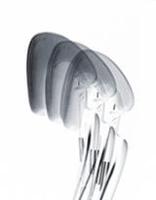Saab active head restraints awarded top safety ratings
 The entire UK-market Saab model range (i.e. all Saab 9-3 and 9-5 models) have been awarded top marks for protection against neck injury, following the latest round of rear-end collision tests conducted by the Thatcham insurance research centre. All models are fitted as standard with Saab’s pioneering anti-whiplash Saab Active Head Restraints (SAHR), first introduced on the 9-5 range in 1997.
The entire UK-market Saab model range (i.e. all Saab 9-3 and 9-5 models) have been awarded top marks for protection against neck injury, following the latest round of rear-end collision tests conducted by the Thatcham insurance research centre. All models are fitted as standard with Saab’s pioneering anti-whiplash Saab Active Head Restraints (SAHR), first introduced on the 9-5 range in 1997.The Thatcham test classifies the performance of a car's front seats and head restraints in offering neck injury protection as 'Poor', 'Marginal', 'Acceptable' or 'Good'. The Saab 9-3 Convertible, 9-3 SportWagon and 9-5 models have all been awarded the highest-possible 'Good' rating, as achieved last year by the 9-3 Sport Saloon in the first round of tests.
A static evaluation of seat design is carried out first, where the position of the head restraint relative to an occupant's head is measured on a crash test dummy representing a mid-sized, male adult. A dynamic test is then performed with the seated dummy mounted on a sled, which is accelerated to 16 km/h (10 mph) in 0.1 seconds to simulate the effect of a typical low speed rear-end collision.
Announcing the results, Thatcham Crash Research Manager Matthew Avery said: "Saab has been a benchmark for designing seats to help prevent whiplash injury. Real world data from insurance claims shows that the Saab 9-3 with active head restraints has produced a 42 per cent reduction in whiplash injuries, compared to the previous model which did not have them.
"The 'best practice' approach from Saab was a fundamental part of the International Insurance Whiplash Prevention Group's test procedure and it encourages all manufacturers to fit similar systems."
Saab’s pioneering SAHR has been developed to reduce relative movement between the head and lower back. The restraint is mounted at the top of a frame, inside the seat-back, which is designed to pivot at its mid point. In a rear-end impact, the occupant’s lower back is forced rearwards by inertia against the bottom portion of the seat-back. A mechanical linkage in the frame then forces the upper half, carrying the head restraint, upwards and forwards to catch the occupant’s head and help minimise the amount of whiplash movement. After activation, the SAHR immediately returns to its passive position, ready for further deployment.
"Although rear-end collisions are seldom life-threatening, they are a common type of accident which can cause long-term injury and discomfort," says Per Lenhoff, head of crash safety at Saab Automobile. "The Thatcham results are in line with our own research and the findings of similar organisations in other countries, such as the USA and Germany. They all confirm the value of our pioneering work in developing the SAHR."

